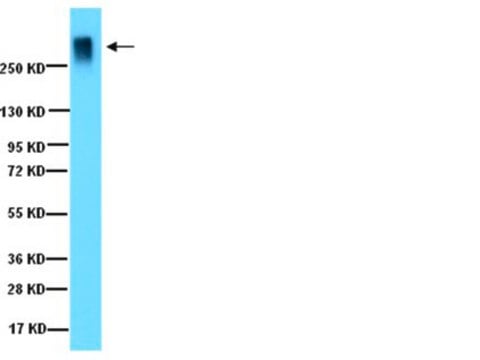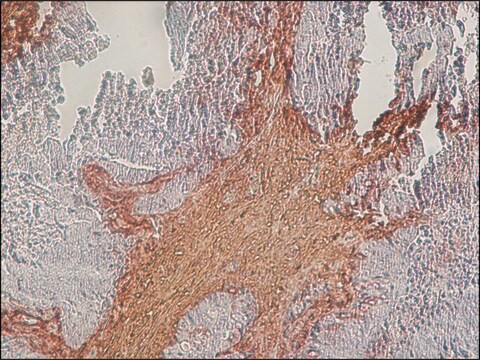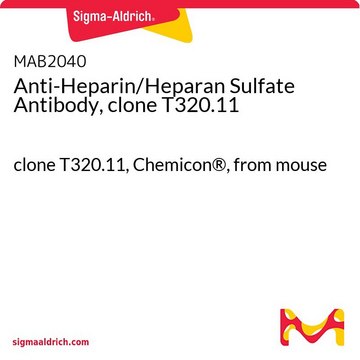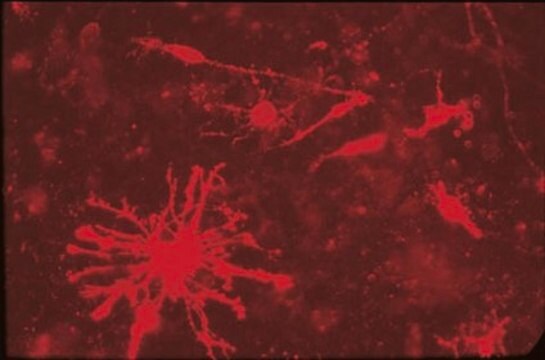MAB5284
Anti-Aggrecan Antibody
CHEMICON®, mouse monoclonal, Cat-301
Synonym(s):
CSPG
About This Item
Recommended Products
product name
Anti-Chondroitin Sulfate Proteoglycan Antibody, Brain (core protein), clone Cat-301, clone Cat-301, Chemicon®, from mouse
biological source
mouse
Quality Level
antibody form
purified immunoglobulin
antibody product type
primary antibodies
clone
Cat-301, monoclonal
species reactivity
primate, human, rat, gerbil, feline, hamster, guinea pig
manufacturer/tradename
Chemicon®
technique(s)
immunocytochemistry: suitable
immunohistochemistry: suitable
immunoprecipitation (IP): suitable
western blot: suitable
isotype
IgG1
NCBI accession no.
UniProt accession no.
shipped in
wet ice
target post-translational modification
unmodified
Gene Information
human ... ACAN(176)
General description
The name derives from the name of the monoclonal antibody originally used to identified by its expression, which was detected immunocytochemicaly
Disruption of the normal patterns of neuronal activity during the critical early postnatal period by physical or biochemical means results in a large and irreversible reduction in levels of CAT-301. Similar intervention in mature animals has no effect
CAT-301 is related to aggrecan from articular cartilage. The CAT-301 antibody immunoreacts with aggrecan, and the chondroitinase treated aggrecan and CAT-301 both have apparent sizes of 550kDa. However CAT- 301 is not glycosylated by keratan sulphate, as aggrecan is.
Specificity
Immunogen
Application
Immunocytochemistry
Immunoblot
Immunoprecipitation
Optimal working dilutions must be determined by the end user.
Physical form
Other Notes
Legal Information
Not finding the right product?
Try our Product Selector Tool.
recommended
Storage Class Code
10 - Combustible liquids
WGK
WGK 2
Flash Point(F)
Not applicable
Flash Point(C)
Not applicable
Certificates of Analysis (COA)
Search for Certificates of Analysis (COA) by entering the products Lot/Batch Number. Lot and Batch Numbers can be found on a product’s label following the words ‘Lot’ or ‘Batch’.
Already Own This Product?
Find documentation for the products that you have recently purchased in the Document Library.
Our team of scientists has experience in all areas of research including Life Science, Material Science, Chemical Synthesis, Chromatography, Analytical and many others.
Contact Technical Service







